Nelson Mandela’s roots revisited – PHOTOGRAPHIC EXHIBITION
Bonile Bam’s fresh interpretation of Mandela’s roots
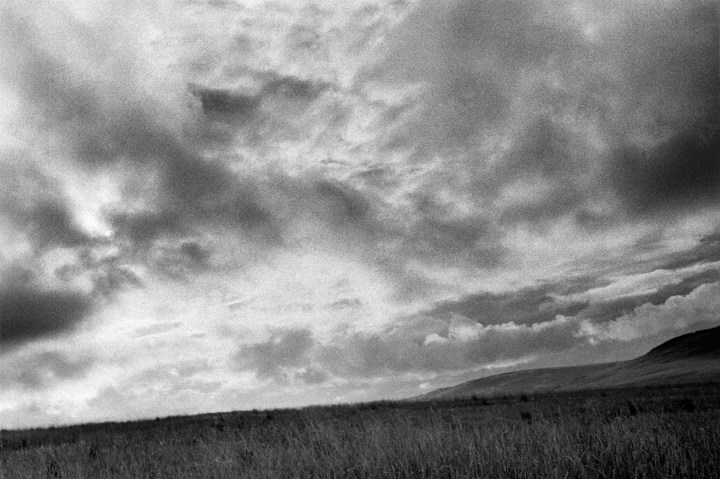
Bonile Bam’s photographic exhibition, Nelson Mandela’s roots revisited, hosted by the University of Johannesburg later in August 2018, is different from other exhibitions, with its focus on the landscape where Mandela grew up, rather than Mandela himself. The imagery is at once hauntingly beautiful and evocative.
Most exhibitions on Nelson Mandela have many photographs of Mandela himself at different phases of his life. Such photographs mainly serve as literary records of Madiba. By their nature they lack the imagination and poetry that are the distinctive qualities of Bonile Bam’s exhibition, Nelson Mandela’s roots revisited. Mandela himself hardly appears in the photographs that are exhibited and the only photographs that may be used are of Mandela shortly before his arrest. (These may be omitted, once the final format is decided on.)
This is because Bam’s focus is on the spaces where Mandela grew up, described in the early chapters of Long Walk to Freedom, where he learnt from other boys how to knock birds out of the sky with stones, to engage in stick fighting, with skill, but also maintaining a sense of honour, not humiliating anyone who may have been defeated. None of the written narratives are visible in Bam’s photographs. What Bam offers to the viewers is the visual context in which Madiba’s relates his early years in the rural Transkei.
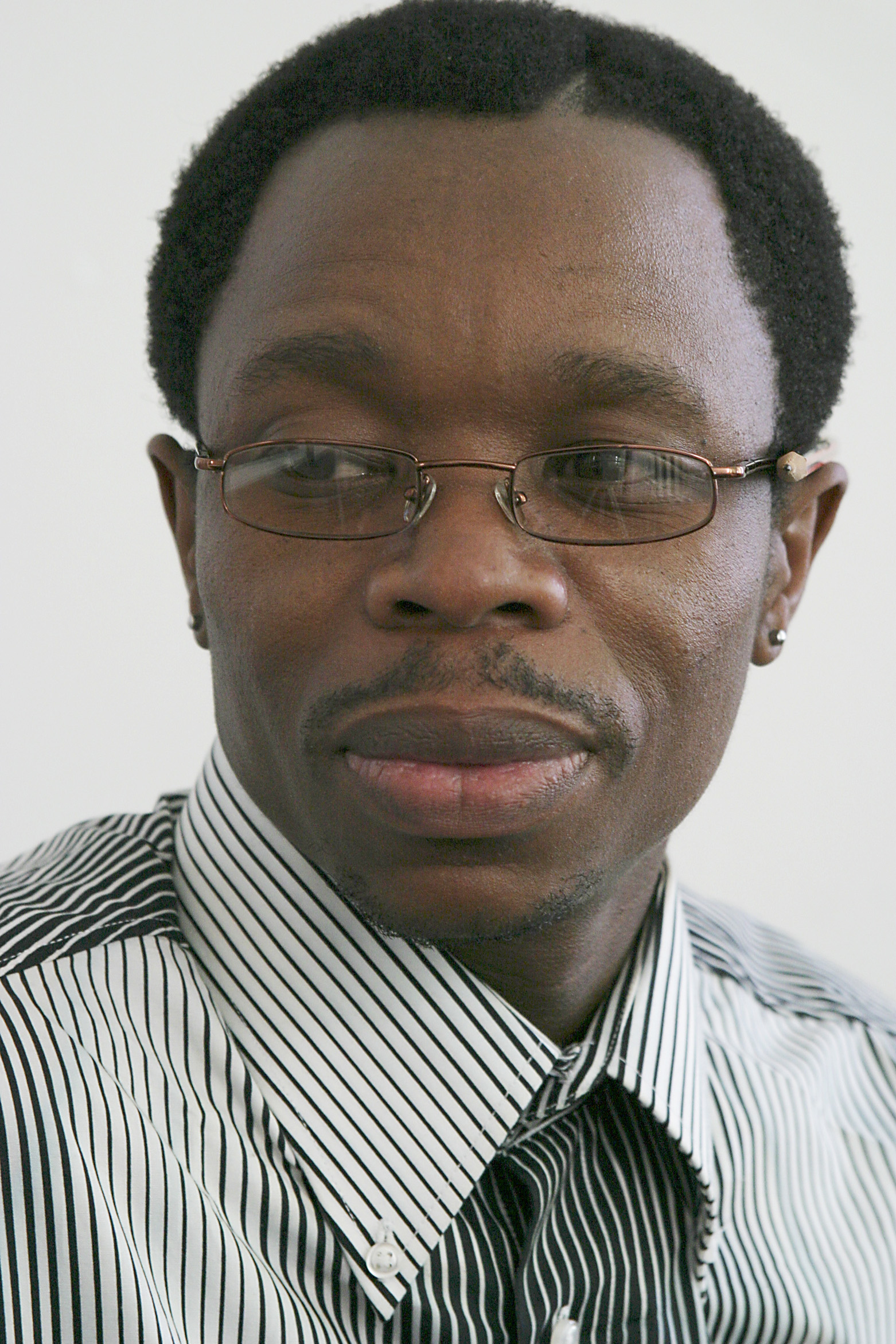
Bonile Bam
It is a unique exhibition in this focus on the physical landscape and pastoral setting in which Mandela grew up. Bam’s poetic images take us to the areas and invite us to imagine the young Mandela in the rural Eastern Cape in the early decades of the 20th Century. The photographs share rare moments and places through which Mandela lived.
The images also reveal Bam’s sensitivity and respect which he shows in photographing the beauty of the landscape and rural life. These images are about the aesthetic of a place and its social activities. Equally they are about Bam’s reverence for both Mandela and the landscape. He writes:
“My work represents a personal journey around spaces and times I refused to ignore. Part of my responsibility as a documentary photographer is to trace and record things I have witnessed before they forever escape the memory. South African landscape has so much hidden in it that still needs to be brought to light. It is my intention to approach every subject or object with great respect. Dignity is the foundation of knowing what to isolate or introduce without hurting the naked eye.”
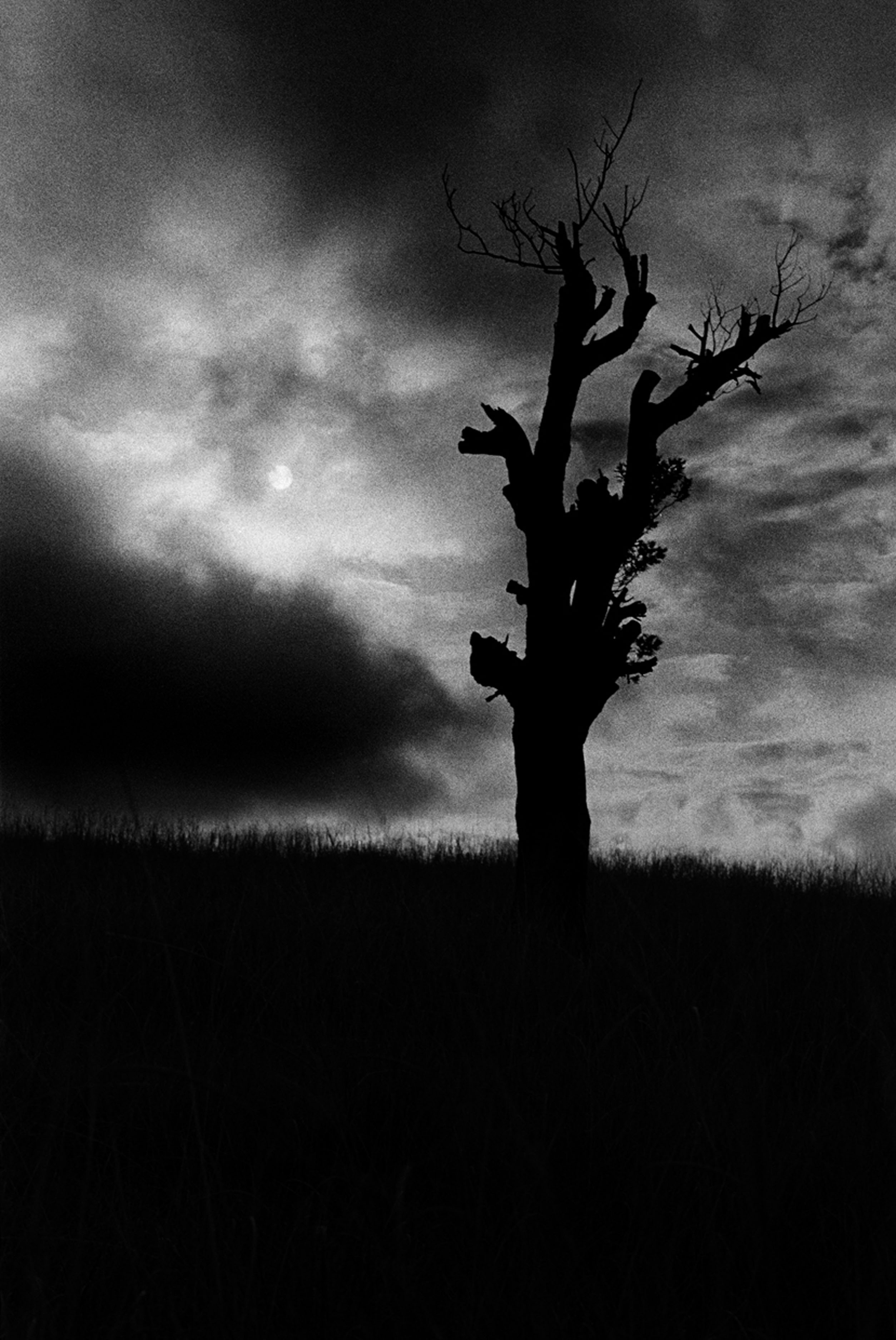
Mandela ‘Natural Scuplture, Mvezo’ – 2005
Bam’s words tell about his care for that which has been hidden and needs to be excavated, memorialised and shared about Mandela’s childhood journeys. The exhibition traces these stories through rural towns of Mvezo, where Madiba was born and where his umbilical cord is buried at the entrance of his parents’ house, then to Qunu and finally to Mqhekezweni. It features a series of black and white photographs not simply documenting but narrating the story of Mandela’s home town and surrounds, lending insight into the physical setting in which Mandela lived, played and was socialised as a boy.
Bam’s road to photography was not easy. Born in 1974 in Port Elizabeth, he schooled in Mdantsane, in East London. He came to photography by chance and was intrigued by what he could do with a camera, although he was also attracted to video work. Gradually he recognised that he needed training. After failing to secure that in Cape Town, he took a bus to Johannesburg, living in a shack with his sister in Pimville, Soweto.
“Because she was working part-time, she could only afford to give me R5 a day. That was enough for someone who had nothing in my pocket.
“One day” Bam says, “I woke up hungry for education. I went to a garage store to buy the Sowetan. I could not find a school I was looking for and was running out of time. So, I phoned 1023 (free Telkom line). I asked about a school that taught photography in town. The lady who answered my call with a sweet voice told me about the Market Photography Workshop. (MPW). I collected the coins that my sister gave me to search for this school. When I got to Bree Street, I asked for directions from the hawkers. The woman pointed in the direction of the Market Theatre Foundation.
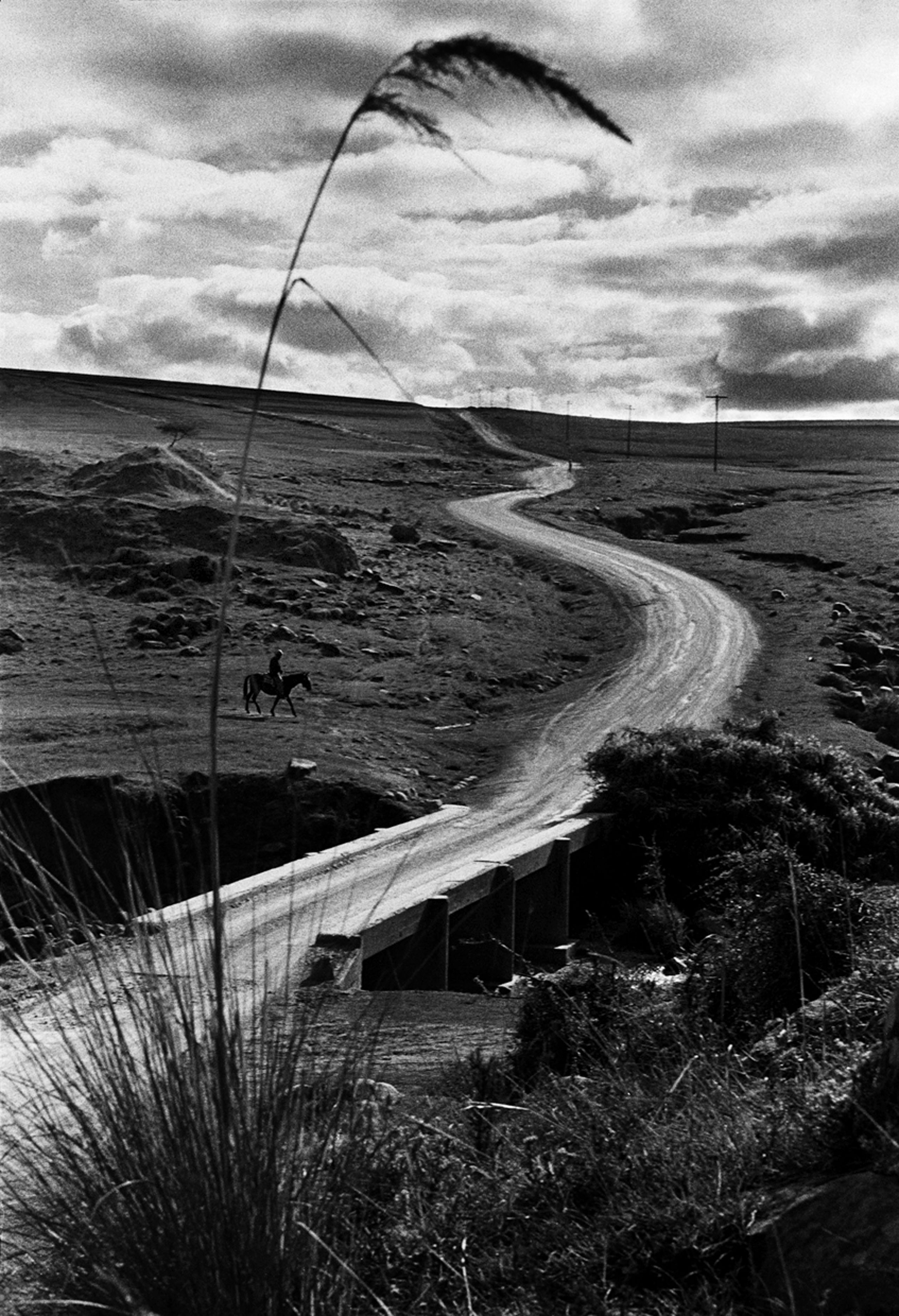
Mandela ‘Long Road that Madiba Crisscrossed to Mqhekezweni’ – 2007
“When I got there, I was informed about the MPW, which was established in 1989. I went in and found Jenny Gordon (then the director of the school). I shared my story. I told her about my background. She listened.
“A few minutes later, I was offered a bursary, transport money and cash to buy lunch. I knew at that moment that, this was going to be my second home.”
This was in 1997.
The MPW was established by the late David Goldblatt, to cater for photographers who had not completed tertiary education but had the potential to be documentary photographers. Bam is one of the beneficiaries of this “alternative education” which offered him opportunities for both professional and personal growth.
During his time at the MPW he interacted continuously with the musicians and artists performing in the Market Theatre and at Kippies. His awareness of and experience in the art world were enriched when he became their official photographer.
Bam was more than a student. Over time he was employed and also involved in the training programme at the MPW. Excelling in his studies, he was appointed an assistant and after graduating he stayed on to teach at the workshop. He benefited greatly from the mentorship of Cedric Nunn and John Fleetwood. And because of the strength of his portfolio and talent he was selected for the Getty Images Fellows Programme in 2003, through which he completed a photography course in New York before returning to South Africa.
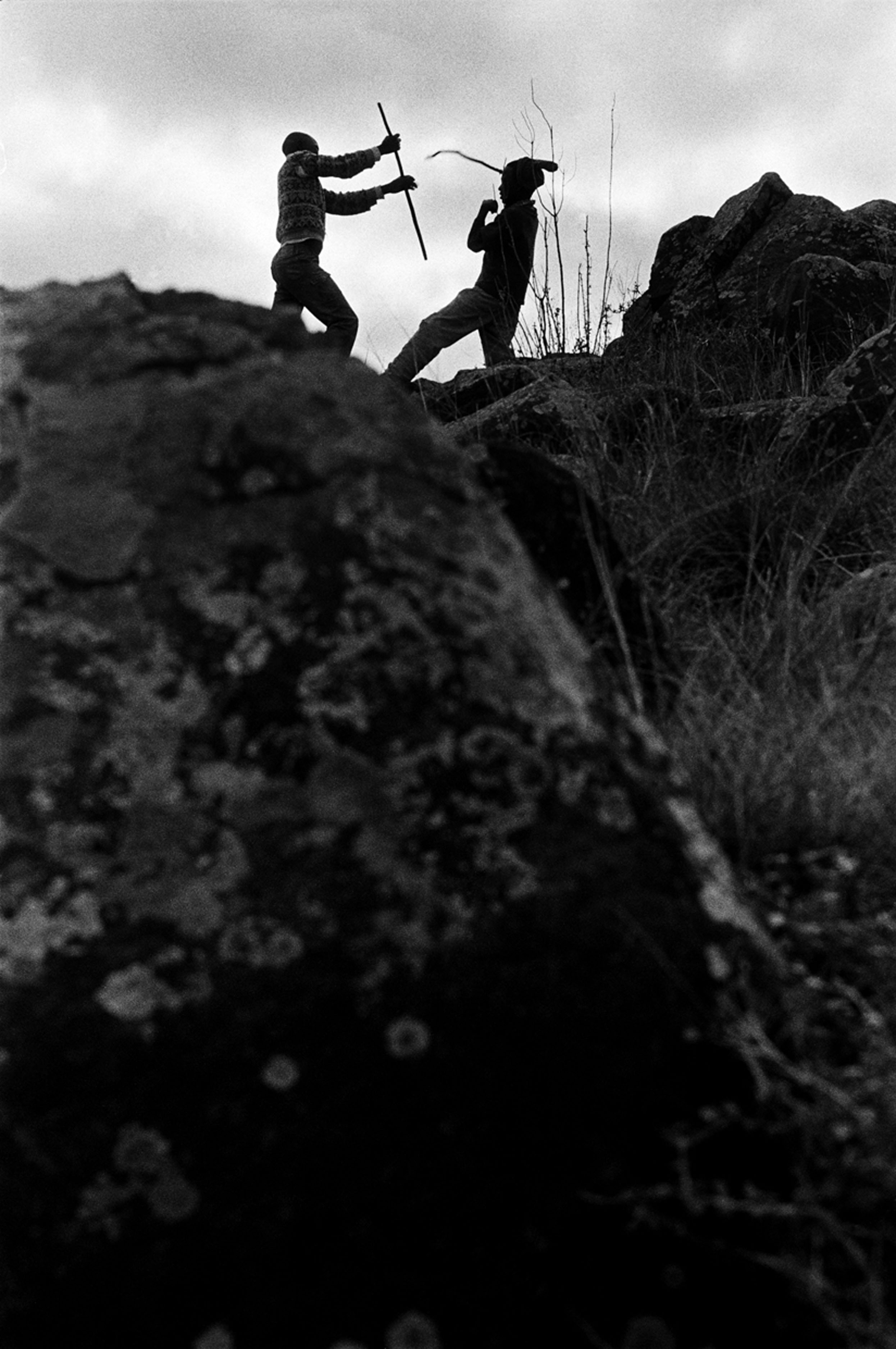
Mandela ‘Traditional Stick Fight’ 2006
Bam gradually emerged as a photographer in his own right exhibiting a range of works in South Africa and internationally. He has held solo exhibitions and participated in group exhibitions in South Africa, New York, Austria, the Czech Republic, Sweden, Germany and the Netherlands. Some of these exhibitions are Initiation of the mind (2000), Ten Years of Democracy (2004), I am not afraid (2007-2008), Initiation (2009), Recognition (2010), South African Photography from1950 to 2010 (2010-2012) and Streets of Blood (2015). His work tackles a range of topics, from male initiation, rural communities, pastoral landscape to portraits, performance arts and crime scenes.
Nelson Mandela directly encouraged his photography:
“In 2003, before I left Johannesburg for New York, I was invited by The Nelson Mandela Foundation to photograph the former president and his guests. At the end of the event, I shook his soft right hand. On hearing the voice at close range, my heart pumped harder and harder. Mandela, who is also known as Madiba, said ‘Good to see you young man, I’m glad you came’. Smiling, he continued, ‘You must treat a camera like a key, it will unlock many doors for you’. That was a turning point in my life.”
Bam explained why he adopted his specific approach in the photographs featured in the Nelson Mandela’s roots revisited exhibition, saying that he wanted to tell the story of Mandela — in a different way — through the landscape and structures that were a primary influence in his political life. He is interested in the seldom-told textures of Madiba’s rural life. As far as Bam is aware, this is the only body of work dedicated entirely to Mandela’s early life.
“This was a self-assigned project. It began when I came back from New York and I was inspired by Mr Mandela himself, who spoke quite clearly about his life story. He explained how he grew up and the struggles that he went through as a boy.”
The collection took three years to complete, and it is as much about the visual traces of Mandela’s early life as it is about Bam’s reconnection with home and himself as a photographer interested in unearthing quiet though significant and educational stories.
“This is the most important project of my life. Madiba motivated me to take photography seriously and, as a result, that made me work on this project with the intention of revealing the hidden or silent story about the man who has inspired the world.”
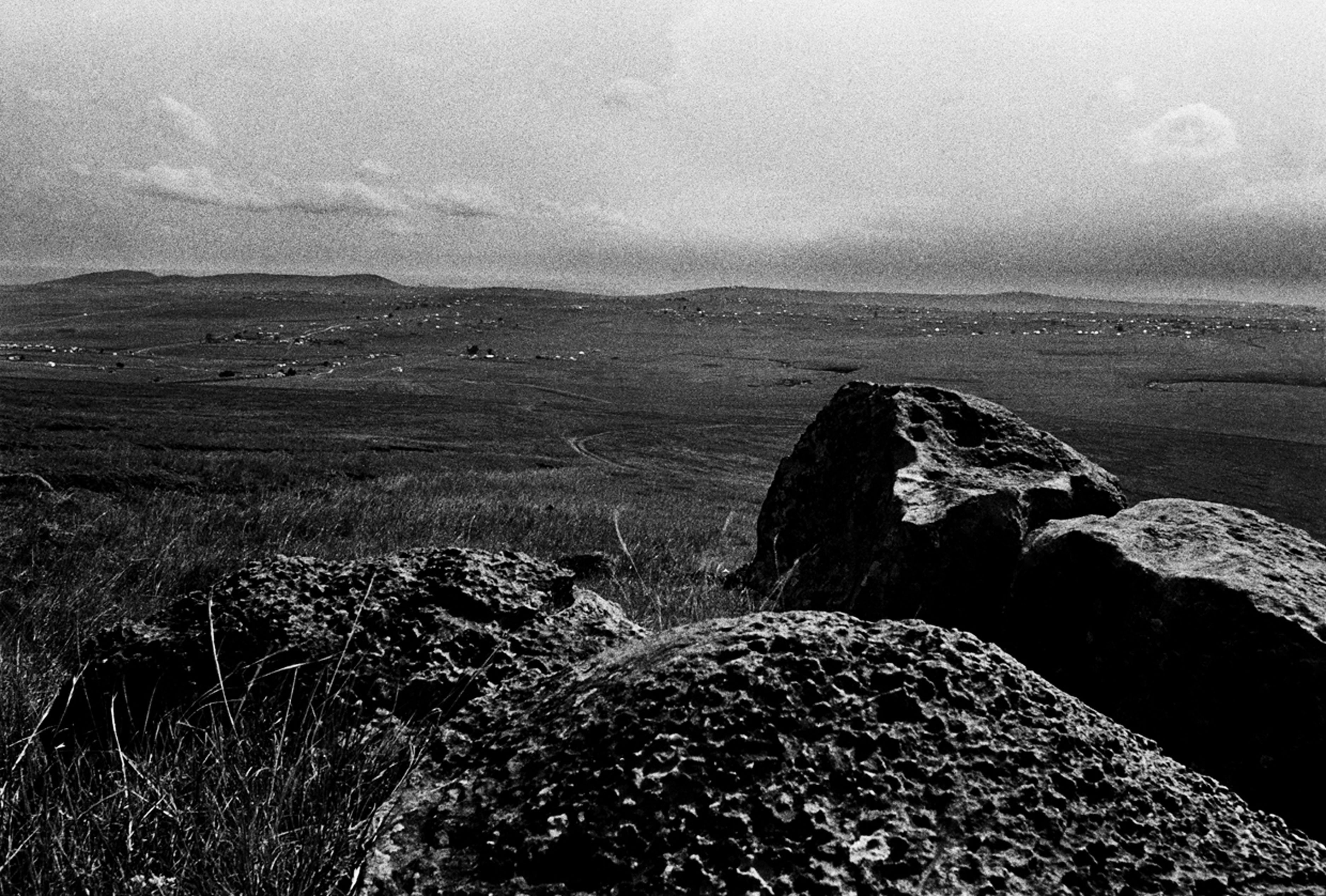
Mandela ‘Quiet and Peaceful, Qunu’ – 2005
Bam explains that he hopes that this exhibition helps people to understand Nelson Mandela better.
“Most people don’t know where Madiba is coming from and I wanted to share with ordinary citizens, or anyone who is interested in his roots, that, as much as he is a recognised figure in the world, he is a humble person who comes from an ordinary background. I think we can motivate other people who might be hopeless and think that they cannot be leaders in the future.”
Two of Bam’s key influences, Cedric Nunn and John Fleetwood, remarked on Bam’s character and dedication. Fleetwood refers to Bam as “a quiet but certain man. In his work, Bonile was just as steady and dedicated as he was as a colleague”. Despite doing other important work, “his dream was always to be go back ‘home’, and in particular to document the world that he shared with Mandela, growing up in the Eastern Cape. He wanted to show the world that inspired a Mandela, the richness of the communities”.
Nunn speaks of witnessing “Bonile’s vision mature and become more articulate over time. His choice of quiet subject matter, and the serious attention he gives to both subject and image contribute to making him and his vision outstanding”.
“I am aware that Bonile has made choices in his career and work, which have always been to uphold the integrity and truth of his passion and calling. Such a decision had been to return and work in his home province of the Eastern Cape, a difficult path but one I’m sure we will be rewarded for.
“Such a reward has been the recent work which explores, reflects on, traverses, interrogates and meditates on the landscape and terrain that one of our foremost leaders, Nelson Mandela, emerged from in the very region that Bonile Bam now resides.” DM
The exhibition is hosted by the University of Johannesburg Faculty of Humanities, in collaboration with the University Library and the National Institute for the Humanities and Social Sciences. It will be launched by Mandla Langa, who has recently published the posthumous volume of Nelson Mandela’s autobiography, Dare not Linger. The presidential years, on 27 August, 5.30 for 6 pm in the UJ Kingsway campus library. The exhibition will then be simultaneously hosted there and at the three other UJ campuses: Soweto, Doornfontein and Bunting Road for two months
Professor Raymond Suttner is involved in organising the exhibition on behalf of the University of Johannesburg Faculty of Humanities and Dr Thembinkosi Goniwe is curator.










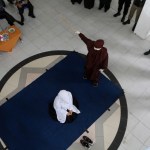









 Become an Insider
Become an Insider